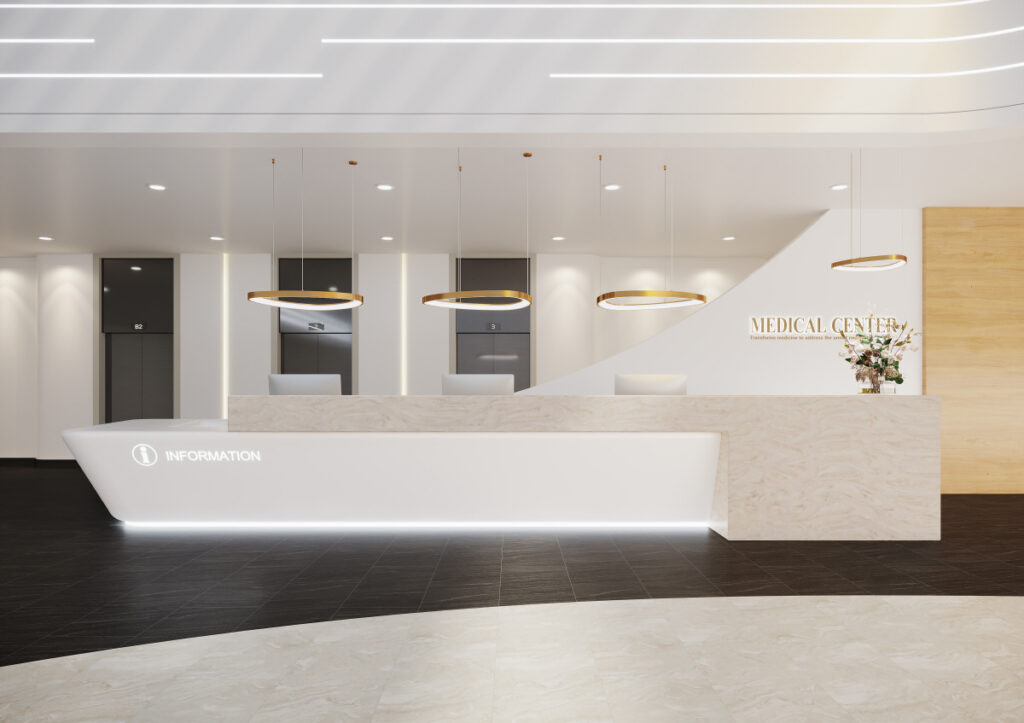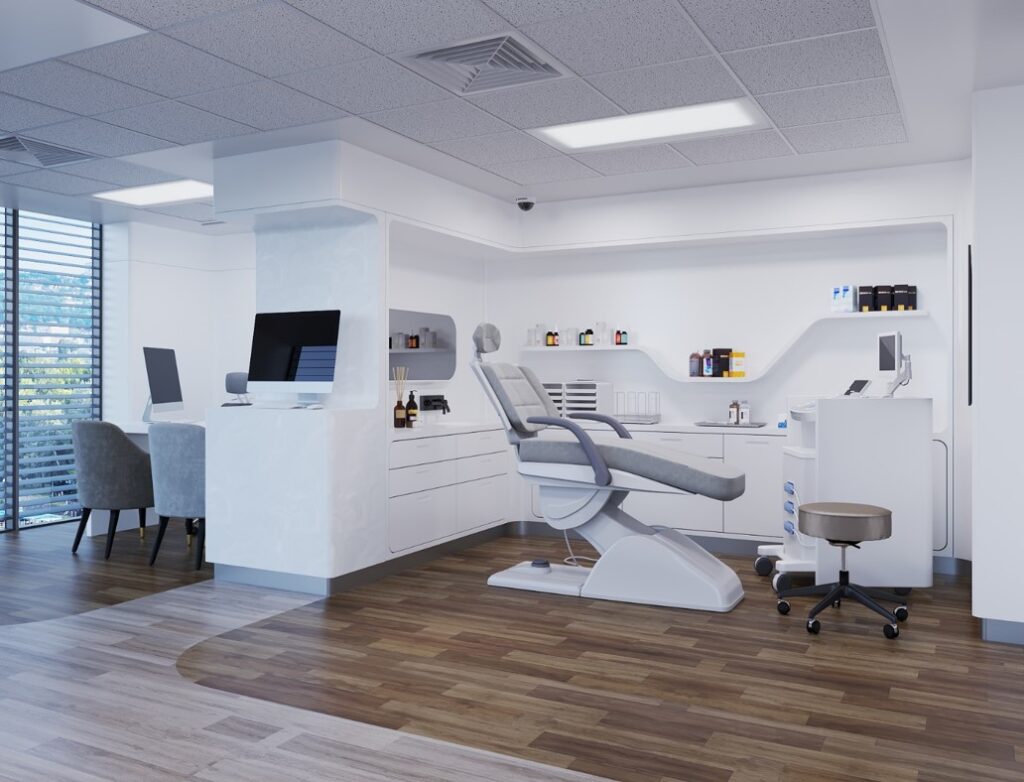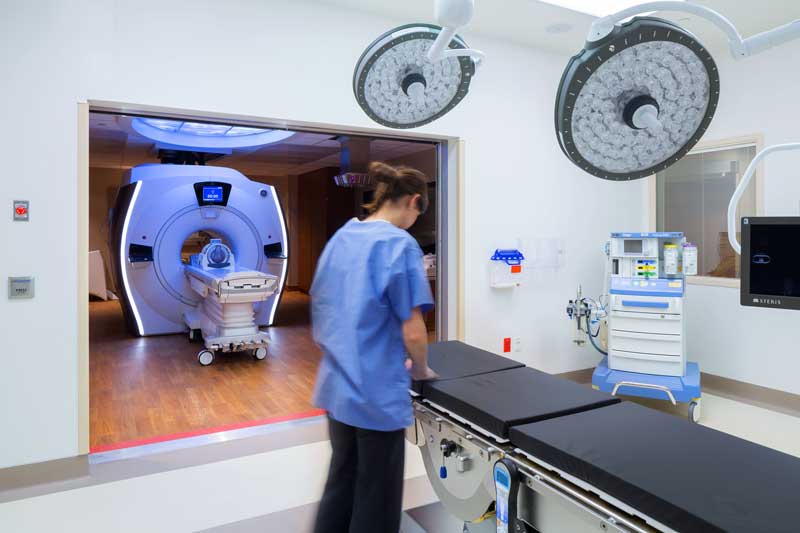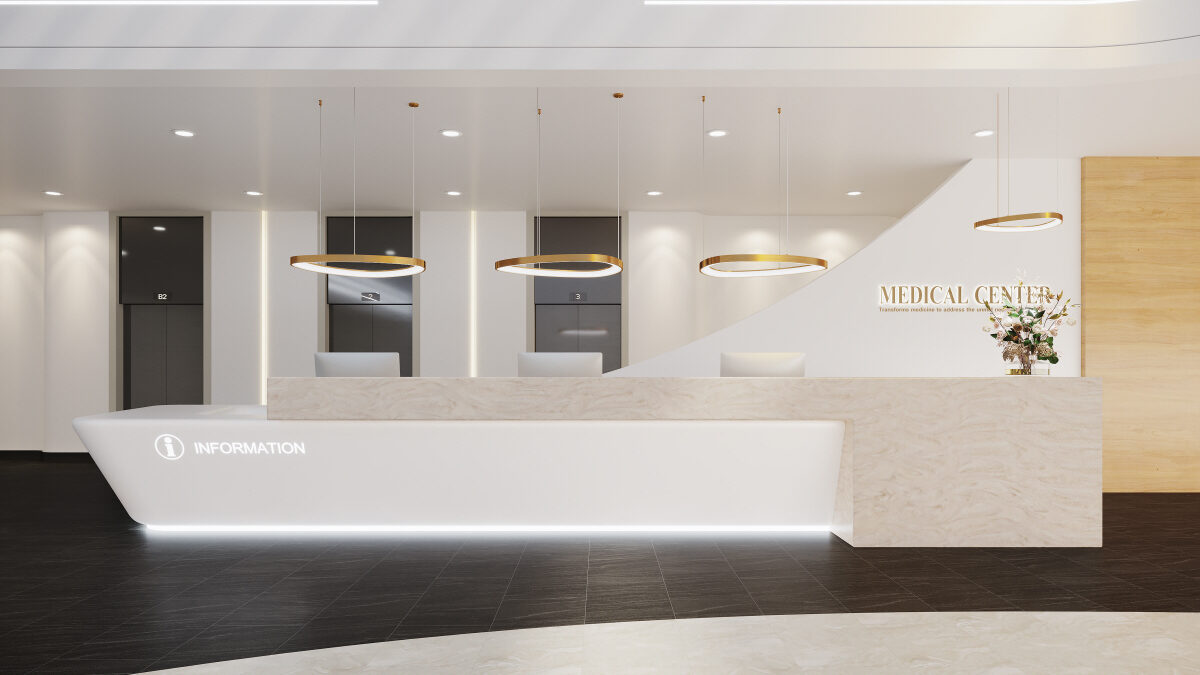
Latest Medical Care Trend and its Effect on Hospital Interior
Although the emergency phase of the COVID-19 pandemic crisis has ended, people’s concern about the hospital environment and their demand for re-evaluation of hospital interior solutions has never been higher.
The representative example would be a rise of an online examination system. A new era of virtual medical care has risen due to an increased awareness on preventing the spread of viruses.
The US government expanded medical care coverage to include virtual healthcare services from 2020, which affected millions of healthcare recipients. FGI(Facility Guideline Institute) also recommends that the doctors’ desk and the background of their offices use colors with low light reflection and absorption to better accommodate virtual visits.
What’s more, in offline hospital areas, healthcare service providers take secondary infection of the coronavirus very seriously because they are held partly responsible for Hospital Associated Infections by healthcare insurance companies in the U.S. Therefore, hygiene inspection teams in hospitals are calling for products that are easier to clean and resistant to chemicals. Thus, impervious materials that are not affected by contamination or virus and have these properties without harming the warm and comfortable ambience of hospitals are expected to gain popularity.
Exam Room Design Suggestions with HIMACS Solid Surface

Virtual exam room design solutions with HIMACS solid surface
Virtual medical care is an innovative medical examination system that prevents infections while visiting the hospital, and liberates patients from time and space restrictions. When speaking with patients remotely, it is crucial for doctors to provide calming and warm background for patients to express their symptoms comfortably.
HIMACS solid surface is a perfect option for virtual exam room areas. HIMACS offers customized colors to help create welcoming environments for virtual medical care. HIMACS’ superior compatibility with lighting and medical equipment enhances the image quality of the video camera to effectively communicate with patients.
Offline exam room design solutions with HIMACS solid surface
Patients often feel worried and vulnerable right before meeting the doctor. It is therefore important to create comforting and hygienic environments in exam rooms that can assure the patients. The non-porous character of HIMACS solid surface allows easy and fast removal of contaminants such as blood and plasma
HIMACS surfaces does not allow any water, dust, virus, bacteria, and chemicals to permeate and is therefore safe from Hospital Associated Infections. In addition, HIMACS has proven its high degree of sanitation by receiving certification from Microbac Laboratories, a third-party testing company, for minimal absorption of virus such that even when the surface is exposed to the human immunodeficiency virus (HIV), it can be perfectly removed using a general-purpose cleaner.
HIMACS Solid Surface – Perfect Choice for Operating Room Interior

Conditions for operating room interior designs
While there are no national performance specifications for wall finishes for operating rooms, hospitals often rely on the minimum standards set in the Guidelines for Design and Construction of Health Care Facilities. Picking the right material is important, because it can affect the hospital’s financing, accreditation, licensing and certification.
A safe and clean material is also critical for the health of the patient. The Centers for Disease Control and Prevention estimates hospital-acquired infections cause about 99,000 deaths per year and cost hospitals $3 billion a year.
Interior material options for operating room wall cladding
Walls in operating rooms have evolved through the years. Many materials have been tried, such as painted plasterboard, ceramic tile, uPVC or rigid PVC, PETG, epoxy resin, stainless steel and solid surfaces.
Each type has its own pros and cons regarding cleanliness, expense and strength.
Painted Plasterboard
It is the cheapest option, but it isn’t sterile and does not hold up to repeated scrubbing. The guidelines do not recommend painted plasterboard.
Ceramic Tile
It was a popular choice for surgical walls in the 1950s and ’60s. Tile can withstand the impact of hospital equipment and is easy to clean. But ceramic tiles easily grow mold and mildew in the operating room’s high humidity. Also, grout maintenance becomes an issue for most hospitals. Ceramic tile is no longer recommended.
Unplasticized Polyvinyl Chloride
Also known as uPVC or rigid PVC, Unplasticized Polyvinyl Chloride is heat-welded and thermoformed to corners and can be molded into any shape. It is a seamless and ultra-hygienic wall surface that was quickly thought to be perfect for operating rooms. However, uPVC is classified as a carcinogen, especially in high humidity and heat. Also, the vinyl plastic contains volatile organic compounds, which when inhaled or absorbed through the skin can lead to several health issues including cancer.
Pros and cons of interior material options
Hospitals requested an alternative to PVC walls, and Polyethylene Terephtalate Glycol-modified walls were developed. PETG is a polyester plastic that can be made into sheets to form a moisture-resistant wall finish. However, this material is brittle and can crack if hit with carts and equipment. Also, moisture can be trapped between the sheets and the trim, creating a home for bacteria and mold. Attempts to fix the issues by adding a fiberboard core were unsuccessful.
On the other end of the spectrum, epoxy resin walls provide outstanding durability and do not harbor bacteria growth. But the material is expensive to install and repair. Also expensive is stainless steel, which does have other positives. It resists corrosion and is extremely hard and smooth, preventing bacteria from forming. It is easy to clean and stands up to the harsh chemicals used in hospitals. But it also creates glare unless it is coated with powder. That, in turn, increases its cost and reduces its ability to withstand bacteria. Also, stainless steel walls make it difficult to expand spaces later.
HIMAC solid surface – The best-suited material for wall-cladding in operation rooms
HIMACS solid surface meets every essential factors for surface materials for healthcare :
UNIQUE DESIGN
One of the most important goals of healthcare providers is to enhance patient experience. The ability to create safe and creative designs is important to achieve this goal. HIMACS solid surface enables designs that are difficult to create with other materials through 3D thermoforming capabilities.
SAFE AND HYGIENIC
A space with many seams is difficult to maintain cleanly and therefore is not suitable for healthcare facilities. HIMACS solid surface features seamless application, which creates a natural look without joints or crevices and leaves no space for bacterial growth.
The seamless application ensures easy cleaning and helps maintain environments that are always hygienic. Also, the Greenguard Gold certificate of HIMACS solid surface proves its safety to be used for children who are the most sensitive to indoor air pollution.
COST-EFFECTIVE
Materials used in healthcare facilities with high traffic of people must be highly durable; otherwise, their continuous maintenance can lead to significant costs. HIMACS solid surface does not suffer from scratches, cracks, and fractures due to its superior materials properties.
Check out LX Hausys HIMACS solid surface collection and get inspirations for your hospital interior design project.

